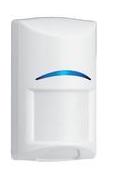
What is a motion detector ?
Also called a motion sensor. Motion detectors are a modules that monitor the movement of objects in an environment. They are a key element in the alarm system industry.
Motion sensor detects the presence of people in an environment. And if the detection occurs, it sends signal to trigger the alarm.
it is based on a perceived increase of radiation emitted naturally from the human body in its environment. When a person walks into the sensor’s field of detection, the difference in radiation creates a change within the receiver. If so, it means that there is a movement. As a result the signal will be sent to the alarm panel.
Types of motion detectors
There are different types of motion detectors
- Infrared motion detectors
We also call it Passive infrared sensor ( PIR ). This type of detector detects infrared radiation that the human body emits. An intruder will be a sudden source of heat and infrared signals. This change in the detector environment is enough to activate it. It will then send an alarm signal
The folowing diagram diagram is an illustration of how a PIR works
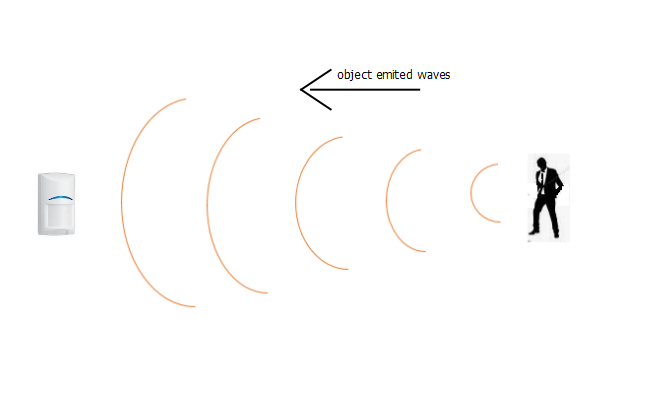
- Microwave motion detectors
This kind of sensor has both a transmitter and a receiver. It sends microwave signals (electromagnetic signals) and measures changes in the amount of the radiation reflecting back into the receiver. If there is a moving object in the coverage space. The rays returned to the detectors will be altered and therefore the alarm will be sent.
take a look to the diagram below to understand how a microwave sensor works
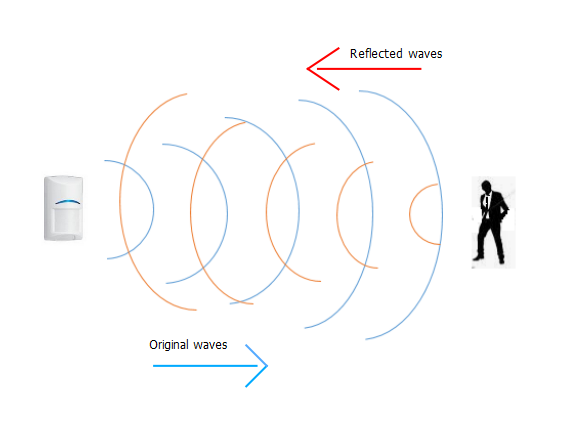
- Dual detection motion detector
This type of detector combines the two types of detections. In other words, it sends out electromagnetic signals and infrared radiation at the same time and measures the changing distance of the reflected waves as it is shown in the diagram. A detector of this type sends the alarm only if the two detections (heat sources and movement) are combined. This dual technology helps reduce false alarms.
We can also classify motion detectors according to their installation. Wall or ceiling (360 degree). Indoor, outdoor, or long range.
Detector coverage
The diagram below shows the coverage of a wall mounted motion detector. Then, we can see that the coverage is over 12m and over 90 degrees
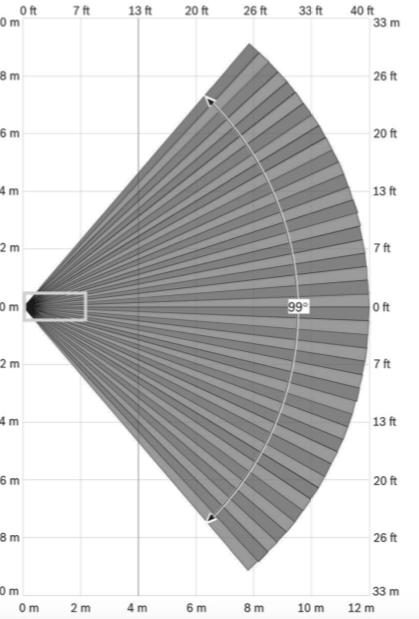
source : bosch data sheet
In fact, Coverage depends on the detector models. The manufacturers indicate this information as well as the technical specifications on the manuals.
Moreover, the coverage corresponds to a detector installed in the corner of a room, in this case a sensor would covers crossing points, windows or doors to detect any intrusion
360 degree motion sensor
We install it on a ceilig and in the center of the room to cover the whole room,
Below image of a DSC brand motion and it’s coverage.
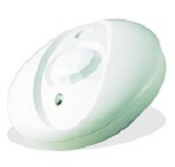
The detector covers 4.5 meters around and a height of 3 meters. This corresponds to the ideal height of the ceiling.
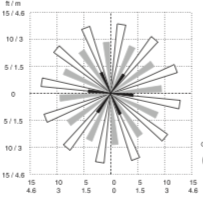
Source : DSC Datasheet
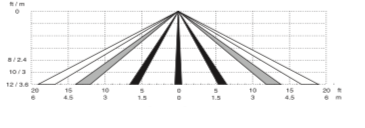
Source : DSC Datasheet
There are long-range motion detectors. Very useful in large areas. For example: warehouses, large corridors or even outside in yards.
Useage of motion detectors
The use of motion detectors is very common and is not simply limited to the alarm system, they are found in
- Switching on/off lights
- Automatic door opening
- Opening and closing barriers automatically
- Soap dispenser and hand dryer in the bathrooms
- … etc